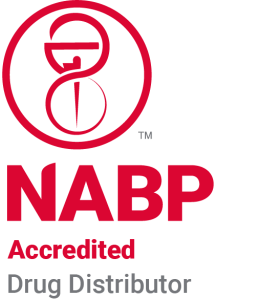Amundsen Davis offers the experience and knowledge to provide legal solutions for pharmacies. This can include acquisition, financing, labor & employment, intellectual property and litigation. As a member of Independent Pharmacy Cooperative, IPC pays the full retainer for our GPO Members. In this webinar Amundsen Davis Partner Julie Proscia provides the Top 5 Tips when Terminating a Problem Employee.
Presented by:

Julie Proscia, Esq.
Partner,
Amundsen Davis
Julie Proscia, Esq., a Partner at Amundsen Davis, provides strategic guidance to employers of all sizes, helping them navigate the complexities of employment law at every stage of the employment lifecycle. From recruitment and hiring to policy development, compliance, and termination or separation processes, Julie ensures her clients are well-equipped to avoid legal challenges. When disputes arise, she is a tenacious advocate, representing clients in a wide range of labor and employment matters. Her expertise spans discrimination and retaliation claims, enforcement of non-compete and non-solicitation agreements, wage and hour disputes, and labor arbitrations. Julie is committed to delivering practical, results-driven solutions tailored to her clients’ unique needs.

Shannon Battle
Pharmacy Services Manager
Independent Pharmacy Cooperative
Shannon Battle serves as the Manager of Pharmacy Services. As a certified pharmacy technician, Shannon brings over 13 years of retail, community and closed-door pharmacy experience to the Vendor Advantage Network. She works tirelessly to seek out the most efficient business solutions, the highest revenue margins and elevated customer service possible from vendors offered to our members. Shannon’s history as a Pharmacy Training Manager has given her valuable insights into the real behind-the-scenes needs of a pharmacy and providing quality access to products and services for our members is her number one priority.
Transcript
Julie Proscia (00:05):
Hello everyone. My name is Julie cia. I’m a partner at Amundsen Davis Law Firm. Today we’re going to be talking about the top five tips when terminating the problem employee. Frankly, if you have employees, then you have had a problem employee. So that’s what we’re going to be doing today.
Shannon Battle (00:21):
Absolutely. Thank you, Julie. Hello everyone. Welcome to this month’s edition of IPC’s Vendor Advantage Network Monthly Spotlight video. Like Julie said, we really want to give you some additional information and some beneficial topics that may be affecting a lot of our store owners. While this quarter’s theme is medical at home, we decided it might be a good time to kind of step back and really give you the tips and tricks to make sure that your business is running as smoothly as it should to be able to provide those services. So Julie, again, I do appreciate you being here. Julie is a partner with Amon Davis Law Firm and currently IPC pays the retainer for all of IPC GPO members to utilize their labor and employment services. So please give me a bit of background on Amundsen Davis and your part in that.
Julie Proscia (01:07):
Perfect. So thank you again for having me here, for allowing us the opportunity to partner with you. So our law firm is a regional law firm. We’re located in five states, but we are a national footprint and we have clients all over the country. We are a full service business law firm. I happen to work in the Labor and Employment Practice group. It has been my area that I have focused on for the past 20 some years. I would say about 24 years. I feel like as you get a little bit older, you’re like in saying it, I have only ever represented employers, so I represent you guys. And anything from questions like we do with a partnership of things like what are the risks in me terminating somebody? Am I covered under FMLA? What is our liability all the way through litigation, wage and hour union litigation? So it’s the full gamut that we cover.
Shannon Battle (02:01):
Oh yeah, absolutely. Well, let’s go ahead and just jump right into this month’s topic then.
Julie Proscia (02:07):
Perfect. So what we’re talking about are some tips for termination. As I said before, at one point in time, regardless of how wonderful an employer you are, and I guarantee that most of you, most of not all of you are fabulous employers. We are going to have a problem employee. So we’re going to need some tips for what do we do when this occurs. The most common reasons that arise when we need to terminate employees are for poor performance. Despite our best efforts to give performance improvement plans to coach, to counsel, there’s repeated poor performance, ethical violations. It’s things like fraud or harassment or theft within our registers, within our organization, disruptive behavior, these are your negative individuals. So either it’s workplace violence or it’s just the person who’s complaining about everything and just really screwing up your team dynamics. And last but definitely not least, are the violation of policies of individuals who are coming in and having poor attendance, confidentiality policies, any of our policies and procedures regarding what we expect individuals to do in the workplace.
(03:16):
So those are the most common reasons for performance. So now let’s talk a little bit about our tips. Absolutely. So the first tip that I’ll give you is to follow your organizational policies. And what do I mean by that? I mean consistency. So when you hear me talk, whether it’s this presentation or when we talk later on, I’m going to say consistently consistency. And that means that what we want to do is make sure that we are following our own policies and procedures. What’s in our employee handbook? What are our policies regarding confidentiality? What are our policies regarding attendance? If it says that we’re going to discipline you for X, Y, and Z, then that’s what we’ll do. Make sure that what we’re doing is consistent with what we’ve done in the past. If in the past we’ve suspended individuals for this, then let’s be consistent with doing it in the future.
(04:03):
Make sure that we are documenting things and consistently doing it. So if we normally write individuals up for being late 15 minutes, then let’s write everybody up for this because dollars to donuts. And I don’t actually know what that phrase means now that I just said it, but I’m going with it. So go with it. Dollars to donuts, the one time we’re inconsistent is the one time it’s somebody who’s in a protected category. We just want to make sure that we’re consistent with what our policies and procedures say we’re going to do and with what we’ve done in the past.
Shannon Battle (04:33):
Absolutely.
Julie Proscia (04:34):
Alright, so our second tip is to conduct a proper investigation. Generally speaking, we don’t want to fire individuals on the spot. We want to get a lay of the land to find out what happened. Even if it looks clear cut, even if it looks like this person punched this person, let’s get some background on what happened. That doesn’t mean that everybody gets a free pass. It means that you could send individuals home, put them on leave without pay or with pay while you ascertain what happened. If that’s checking out the video, if that’s talking to the individuals, if that’s checking your emails, make sure that we have an idea of what happened so that we can defend it later on and say, we conducted a reasonable investigation and that’s why we made the decision that we did. If we need to talk to individuals who are witnesses, let’s do that.
(05:18):
And then we can make the determination as to whether or not we want to terminate or suspend or what we want to do. But we want to have all of the facts or as many of the facts as we can before we move to that next step, assess the risk. Every action comes up with a reaction. So we want to make sure that before we effectuate a termination, what we’re doing isn’t going to have ramifications that are unexpected. It doesn’t mean that we’re not going to do it, but we want to know what we’re doing. So are there any personal conflicts? Is there a reason we wouldn’t want to terminate somebody? Is there a bias that’s coming into play, whether it’s because of your personal or relationship or some other reason? Is there any motivation of discrimination? Is there any motivation of retaliation? Did this person recently file a complaint?
(06:07):
So what we generally like to do, if it’s possible, and it’s not always possible, depending upon the size of an organization, is to have two individuals. If one could be HR who’s looking at the whole organization, that’s great. But if two individuals look at the individual and the reason for terminating the individual before we effectuate the termination, that allows us to say, okay, this is what we’ve done in the past. Because again, remember number one was consistency. This is what we’ve done in the past and this is something that aligns with our policies, our procedures, and our fairness and our equity. They also gives us the opportunity to ascertain, oof, this might be a little bit risky at this point in time because this person just filed a worker’s contemplate, or this person just did X, Y, and Z, so maybe we’ll move it instead of a termination to a suspension. At least we know the options and the risks available before we do it. So assess the risk.
Shannon Battle (07:07):
Right. Do you have recommendations or maybe outside sources that could assist our smaller stores that may not have an HR department or use those virtual online HR a process that would really help them in that case to get some outside opinions if they need that?
Julie Proscia (07:24):
Absolutely. Okay. So I swear I did not tee her up for this. Now woman knows her job, but I did not see her. But that is what we are for. So if you call us up and you could call or email as many times as you want every single month, and you call us up and say, I’m about to do this termination, I just, I’m feeling a little bit concerned about, I just want to walk through it. That’s what we do. We’ll walk through it with you and say, okay, these are the concerns that I would have. These are your risk factors. And then you can assess whether or not you want to proceed forward with it. Because sometimes we’re like, you know what? Maybe now is not the time. Or other times it’s like, but if we don’t do this, the risk that we have with this spreading throughout the organization is too great. We need to move forward. So absolutely. So that is what we are for. Perfect. Alright, let’s move forward.
(08:14):
Confidentiality and security. So once you determine that we’re going to move forward with a termination, we want to make sure that we are not just assessing the risk, but then minimizing any risk. We want to make sure that we revoke access to them. Even the nicest individuals in the world sometimes go south once you’ve terminated them, so they shouldn’t still have access to get into the store, they shouldn’t still have access to get into our computers or our databases or any of our sensitive documents or information. If they have any of our confidential information, our intellectual property, then we need to make sure that that comes back. We want to make sure that they don’t have any of that information. So that means that if you need to work with it or with a locksmith or your security company to ensure that once you do the determination that their codes are cut off or their access into the computer system and is cut off that we do that. Likewise, things that we often forget about is that if they have a credit card that’s a corporate credit card, make sure that that’s cut off. If you have vendors that they are the individuals who are the point of contact with, make sure that we contact them to let them know that this individual is no longer having authority to buy or to sell to them because we don’t want somebody to accidentally then accidentally buy a car on our corporate card because it’s a lot harder to get it back later on to get money.
Shannon Battle (09:40):
Oh, it’s a great tip. Yeah.
Julie Proscia (09:42):
Oh my gosh. It’s so hard when they’re like, well, well just, I’m like, no, no, no. Once it’s gone, you have to clot back. So let’s just cut it off to begin with.
Shannon Battle (09:50):
Yeah, absolutely. Great tips there.
Julie Proscia (09:54):
And last but not least, and this goes hand in hand with the last two, is once we’ve determined that we’re going to move forward with determination and we’ve assessed the risk, right? We’ve assessed that like, oh, there might be some problems. This might be the individual who’s just had a worker’s comp complaint is over 40, has FMLA has all of these things, then we need to make sure that we’re doing everything that we can if we want to do so to mitigate that risk. And that could be things like a severance agreement. If we’re concerned that they’re going to go out and steal our customers and clients or our vendors, then maybe it’s something along the lines of depending upon what state you’re in, non-compete provisions, non-disclosure provisions, we have to make sure that we are also complying with all of our federal and state laws regarding final payout and states differ for this.
(10:42):
California, it’s you hand the check at the same day. Other states like Illinois, it’s your next regularly scheduled pay period. We have to make sure that we’re paying out all of our outstanding benefits. So if we have earned an accrued vacation, then we have to pay that out. And again, when you have to pay that out, depends upon what state you’re in. So whether it’s a time of separation, whether it’s an extra regularly scheduled pay period. And lastly, if they have health insurance with us, then we have to send them COBRA options. Or if we’re small enough that we’re not under cobra, then the state options and you have a timeframe and a window that you have to send those in. So we just want to make sure that we’re comporting with all of our federal and state legal compliance and making sure that we’re getting out our final pay. We’re doing any risk mitigation that we need with severance. And once you do that, you’re good to go.
Shannon Battle (11:38):
Perfect. Can our states reach out as well for that state by state information while they stores reach out for that state by state information or assistance in making sure they’re meeting all of those?
Julie Proscia (11:49):
Absolutely. It does not matter what state you’re in. We got your back.
Shannon Battle (11:53):
Awesome. Well, Julie, this is great information. Of course, highlighting areas that we may not have covered now or topics that you can help out with where I know our stores have a lot of questions and maybe don’t know who to reach out to. So I’m so glad that I have you here. Julie’s information is here on the screen as well as a QR code here that’ll take you to IPC’s landing page. There is the contact form there. Julie’s information is there. You’re more than welcome to reach out to her. I do look forward to doing more of these videos in the future. We’ll pick a few more topics that maybe our members will send in and get some consultations reached out to you for sure.
Julie Proscia (12:32):
Thank you so much, Shannon. Thank you. IPC, it is a privilege to work with you always. Thank you, Julie. It’s been great.







 by
by